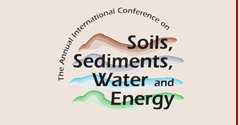Article Title
Vapor Intrusion Assessment – A Comparative Analysis of Subsurface Vapor Sampling Methods
Abstract
The paper and presentation focus on subsurface vapor data collected as part of a vapor intrusion assessment where tetrachlorothene (PCE) is the principal volatile organic compound of interest. In support of this assessment, we have conducted soil gas sampling and analysis to aid in identifying and delineating the presence of PCE in soil fill and residual silt-clay saprolite soils derived from in-place weathering of siltstone bedrock. During the assessment, we collected soil gas samples from temporary points, which were advanced using hand-operated Geoprobe® direct push rods to depths ranging from 2 to 7 feet below ground surface. Grab samples were collected using the Geoprobe® post-run tubing (PRT) system into evacuated glass vials, which were later analyzed off-site. Following vial collection and retrieval of the Geoprobe® rods, several sampling locations were completed with permanent soil gas monitoring implants constructed using stainless steel screen and tubing, and backfilled using a glass bead pack overlaid by bentonite chips. Several weeks later, we collected soil gas samples from the monitoring implants using Summa canisters. Despite the differences between sampling techniques, time and duration of sampling, and volume of the samples, PCE concentrations measured in vial and canister samples are remarkably comparable, generally exhibiting order of magnitude agreement. With some limitations, the results suggest that vial sampling can be used as a complementary method to conduct subsurface vapor surveys. Canister samples collected from the vapor implants on a bimonthly basis illustrate the effects of seasonal variability and underline the importance of monitoring over a period of time under different seasonal conditions to support a rigorous assessment of vapor intrusion potential.
Recommended Citation
Levy, Laurent C.; Shea, David; and Carr, Daniel B.
(2011)
"Vapor Intrusion Assessment – A Comparative Analysis of Subsurface Vapor Sampling Methods,"
Proceedings of the Annual International Conference on Soils, Sediments, Water and Energy: Vol. 16, Article 10.
Available at:
https://scholarworks.umass.edu/soilsproceedings/vol16/iss1/10
